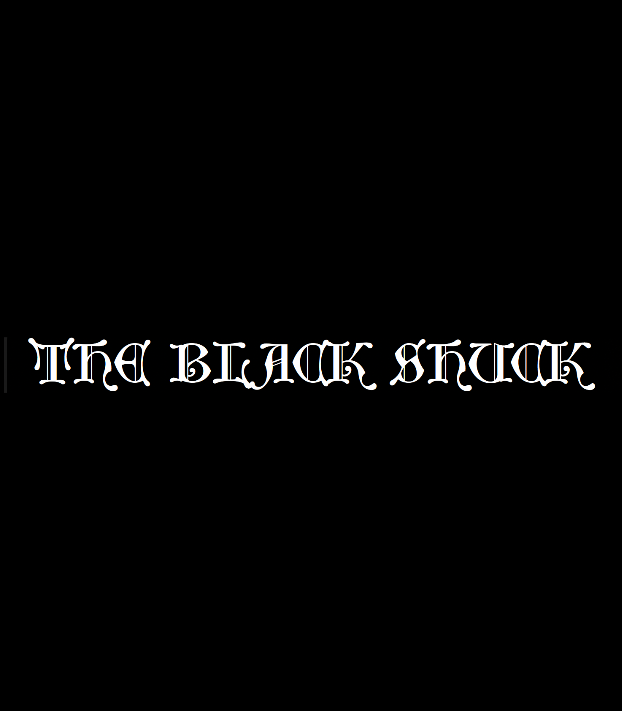Our intentions for creating this film were to tell a haunting story associated with a specific place in Cambridgeshire that would captivate and terrify audiences. As my partner and I were doing research, we came across the folklore about the demon dog that haunted and roamed East Anglia during mediaeval times, known as the Black Shuck. We were fascinated by the tale and wanted to explore it further.Initially, we thought of approaching the film as a sort of ghost hunt where one sceptic and one believer of supernatural entities would explore the areas that the Black Shuck had been seen and try to encounter the demon to prove or disprove the legend. However, as we delved deeper into the legend and did more research, we realised that there was much more to the story than just the sightings.We decided to structure the film in a way that would be more informative and engaging for the audience. We wanted to create a piece of work where its approach would be more textbook based and tell the story solely on the Black Shuck. By taking this approach, our intention was to not only tell the story of the Black Shuck but also shed light on the history and folklore of the region.

As for our influences, we initially planned to do a ghost hunt type of documentary and watched a series on YouTube called Buzzfeed Unsolved, a documentary series about two hosts that explored morbid supernatural and true crime stories, in which they would actually go to these places where the particular situation occurred. However, we did scrap that approach and instead took influence from two BBC videos: ‘The tiny village terrorised by an ancient legend’ and ‘Black Shuck: Legend of 'killer dog' lives on.’ The first video tells the story through a voice over recalling the legend and interviews different people, while the second video utilises animation, text, and music to explain the legend.
Primary Film Locations
Saint Marys Church
Bungay, England
Holy Trinity Church
Blythburgh, England
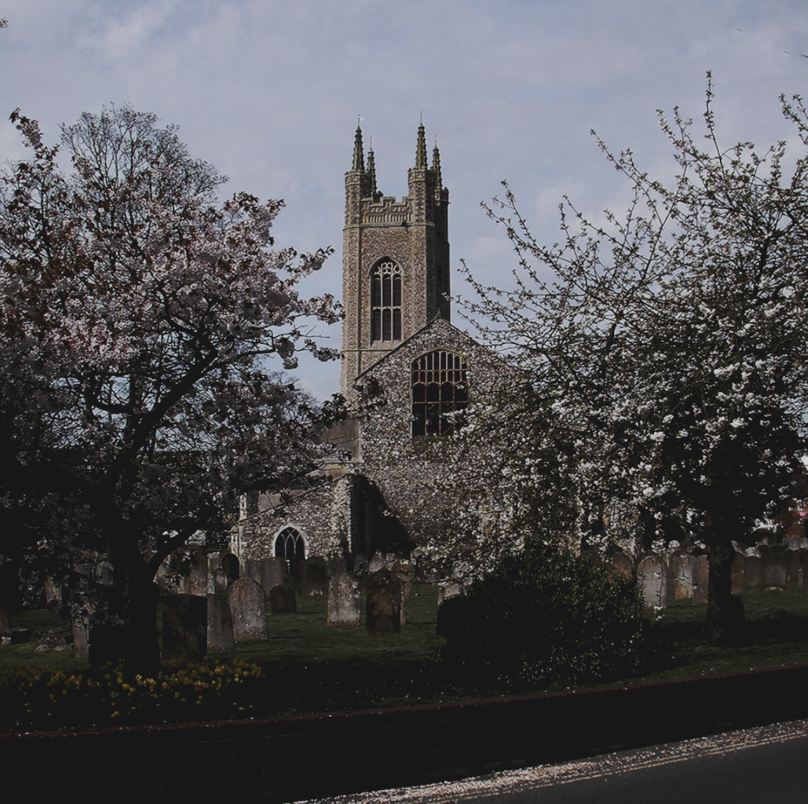
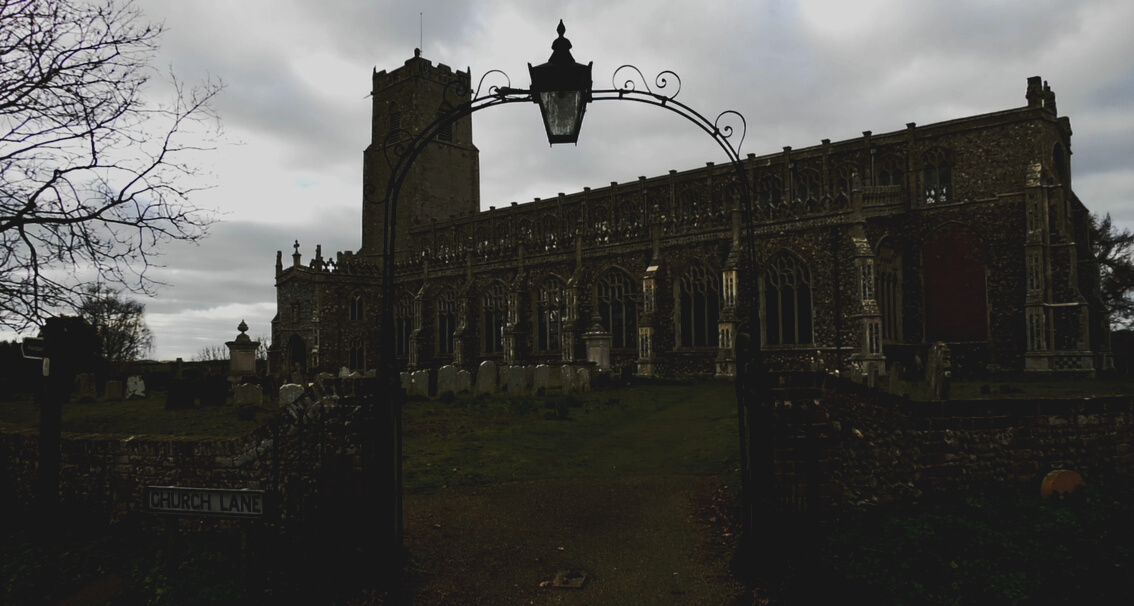
A key sequence in our film that epitomises the strategies we utilised and explored are seen in the opening sequence. As the song Chaconne in G minor play, we start in the town of Bungay, the first two shots showcase a closeup of the Black Shuck weather vane. With each beat of the song a sharp cut displays a new shot, after the third beat the Roman statue of Lady Justice holding a sword and scales is displayed. After a fourth beat Lady Justice is still positioned in the centre of the frame but now Saint Mary's Church is in the background, this creates an eerie and sinister atmosphere in which surrounds the myth. When the fifth beat of the song hits, the Blythburgh Angel is centred in the middle of the frame with branches of trees surrounding it. Continuing to cut to a new shot with every beat, on the sixth one the lens is unfocused and slowly focuses on the bottom half of the angel, which displays a faded and nearly withered away sign of the word ‘Blythburgh’. As the song hits a strong violin note, the narrator asks the question, ‘What is folklore?’, and in this shot the back of Holy Trinity Church is presented. Throughout these shots, the day we filmed them the weather was a bit dreary but still a bright out. In post-production, we went ahead and colour graded the following shots and took out the saturated aspects of the location in order to fit the dark gothic tone of the documentary.
Shot List
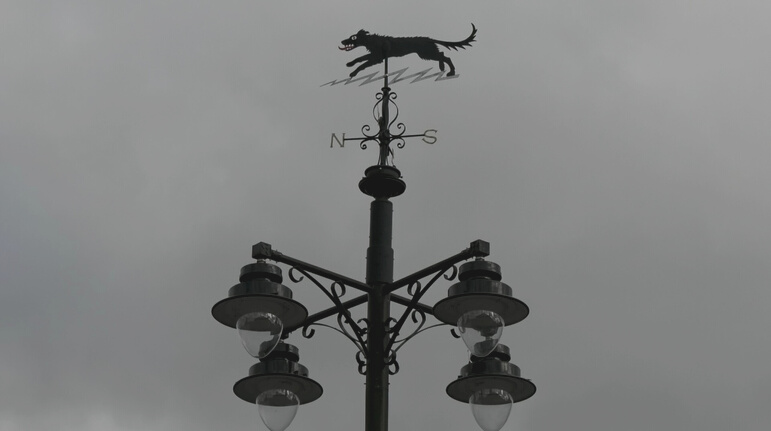
Black Shuck weather vain
MCU
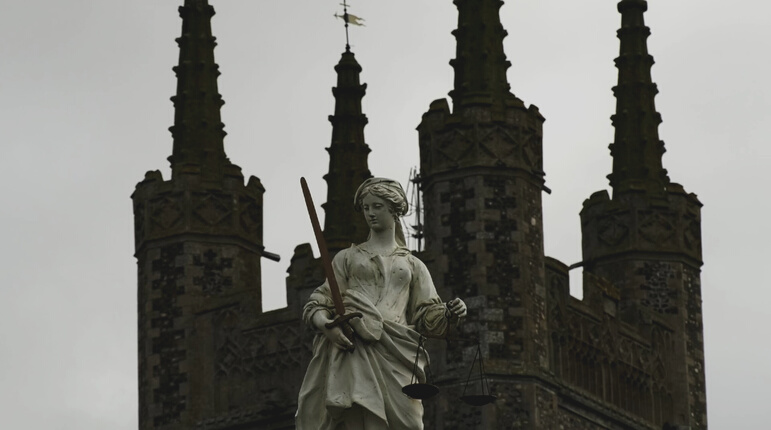
Lady Justice and Saint Mary's Church MCU
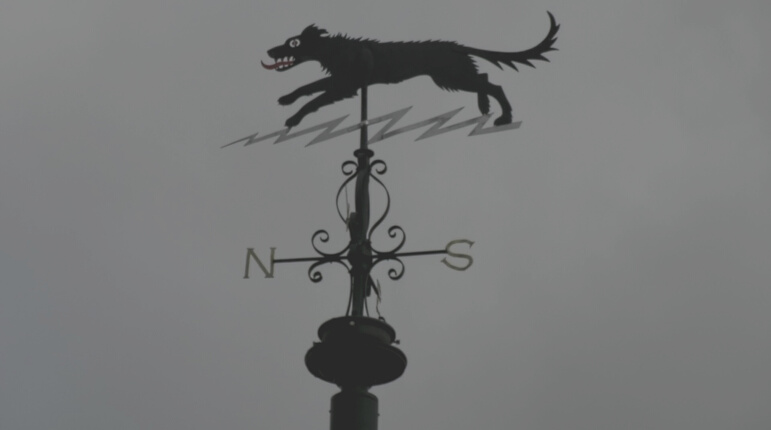
Black Shuck vain
CU
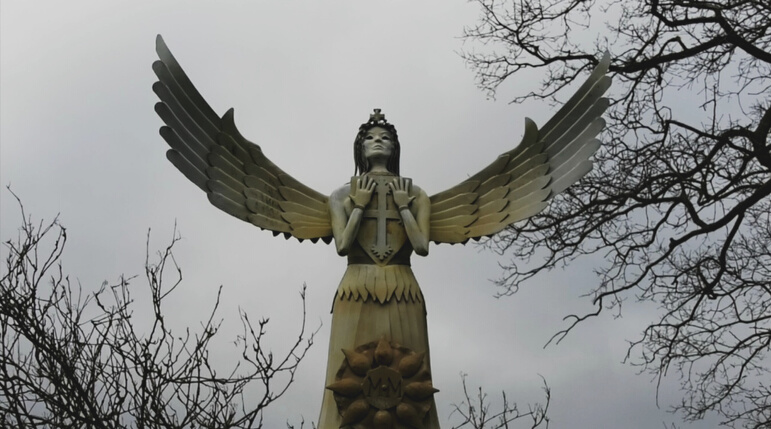
Blythburgh Angel
Wide
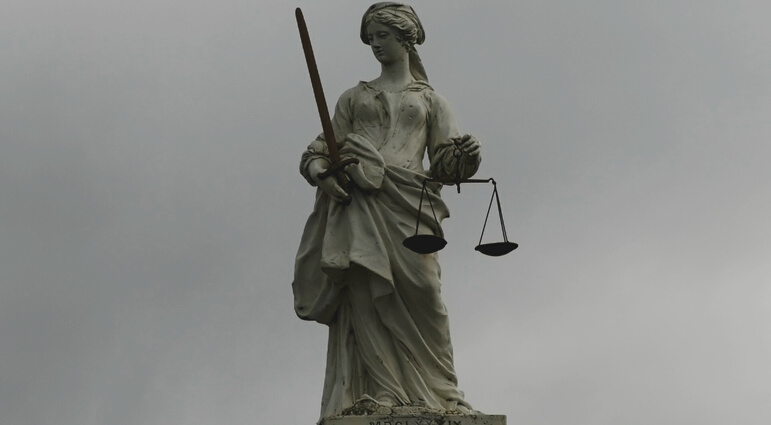
Lady Justice
Wide
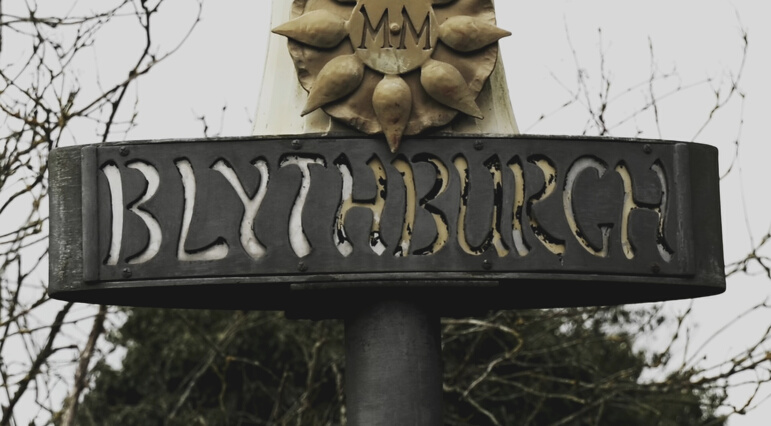
Blythburgh sign
MCU
As the narrator proceeds to answer the question, the camera cuts to various angles of Holy Trinity Church of Blythburgh, gradually revealing its unique charm. The church, also known as the Cathedral of the Marshes, represents the purest form of mediaeval architecture that has stood the test of time. The remnants of gravestones from the marshes surrounding the church serve as a reminder of the rich history and cultural significance of this site. As the camera captures the intricate details of the church's
structure, the overall atmosphere feels both haunting and
desolate, evoking a sense of awe and reverence for the place.
The combination of the church's architectural beauty and its
historical importance make it a truly magnificent landmark,
one that is sure to leave a lasting impression on anyone who
visits. The film contains an array of additional visual
materials that complement the footage we shot.
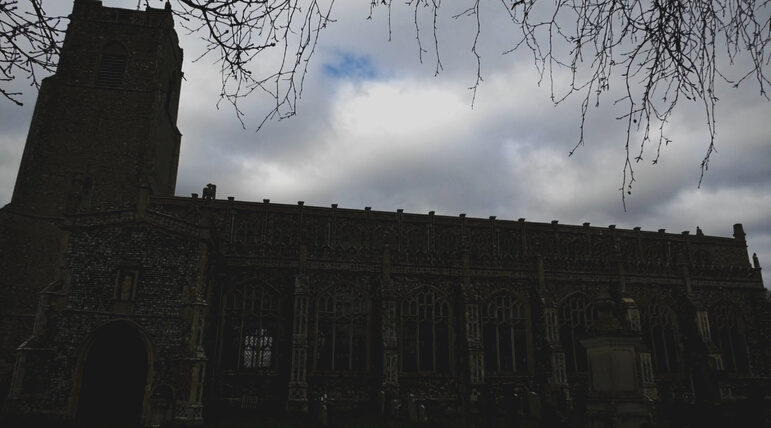
In addition to the stunning visuals we captured, we included a variety of artwork, maps, and images of text from books that all contribute to the story of the legend. Some of these materials help to provide historical context, while others aim to immerse the viewer in the atmosphere of the tale. The use of maps, for instance, allows the audience to follow the movements of where the phantom hound travelled in the story, while the inclusion of text from books adds depth to the narrative and helps to illustrate the significance of the legend. Altogether, these carefully chosen materials serve to enhance the overall viewing experience and create a more detailed and nuanced representation.
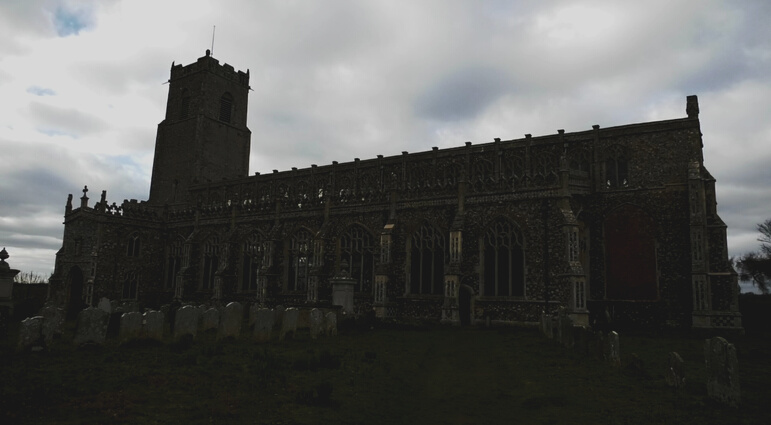
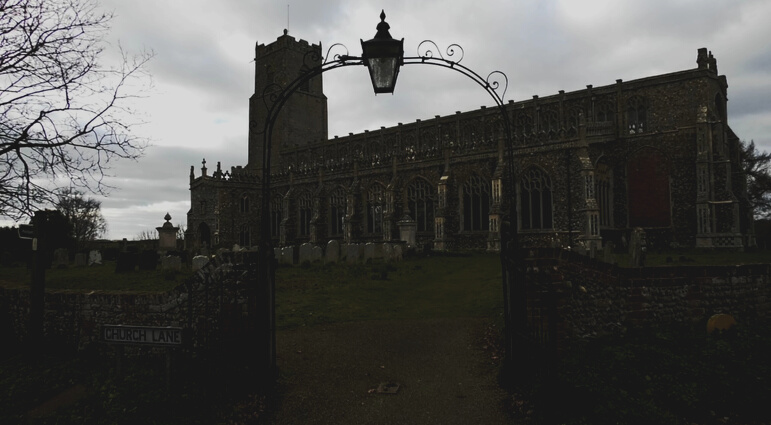
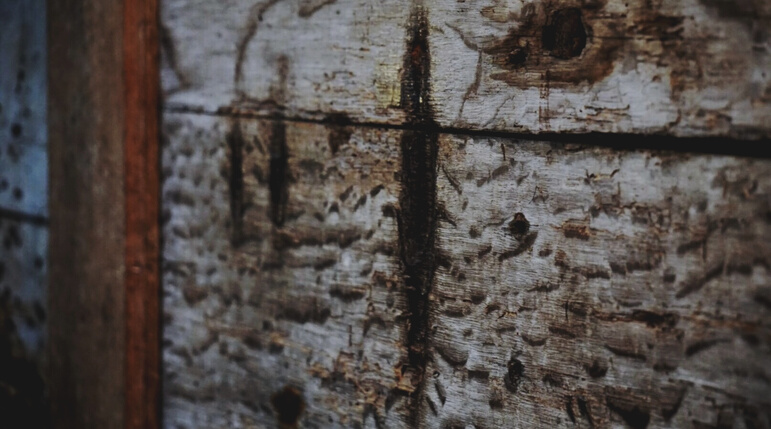
Scorch marks left by the Black Shuck
ECU
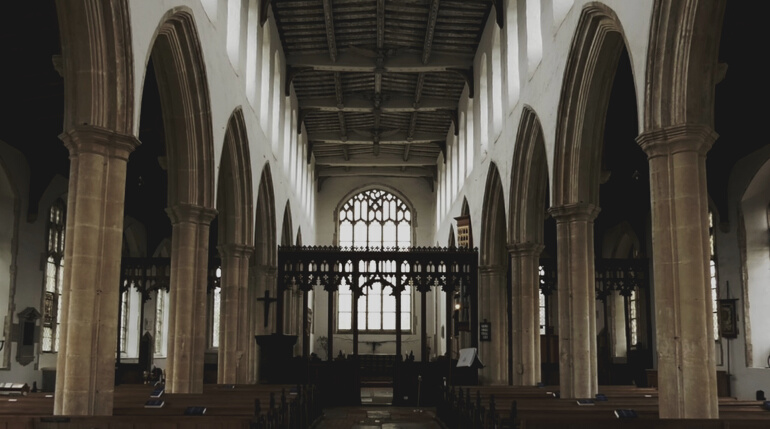
Holy Trinity Archway
LS
We set up the story on a stormy night, when the black shuck made an appearance in both churches. We used the same clips from the beginning, as well as new ones from inside the Holy Trinity Church. By using clips from the beginning of the film, we were able to create a sense of continuity and connect the different parts of the story. The addition of new footage from inside the church allowed us to showcase the location in more detail. While the narrator continues to tell the story and Chaconne in G minor plays in the background of our audio, we also added a thunderstorm ambiance. By adding the sound of rain, the audience can feel like they are experiencing that night themselves. This sequence was crucial to the film as it helped us to create an atmospheric and immersive experience for the audience. We wanted to transport the viewers to the night when the Black Shuck appeared, and the rain helped to evoke the feeling of being in the moment and heightened the sense of tension and unease.
In terms of ways we could have improved the film, it would have been to incorporate interviews with locals. This could have added a personal touch to the film, allowing viewers to hear from people who have been living with the legend for generations. As well as including creative ways to tell the story could have made the film more engaging and memorable for viewers. For example, incorporating animation or reenactments could have made it easier for viewers to imagine what it was like to live with the legend in the past.
